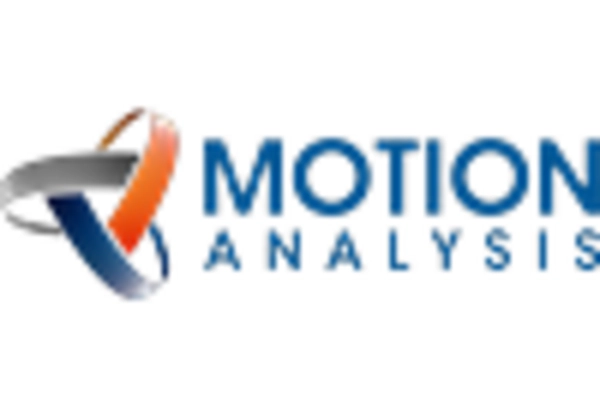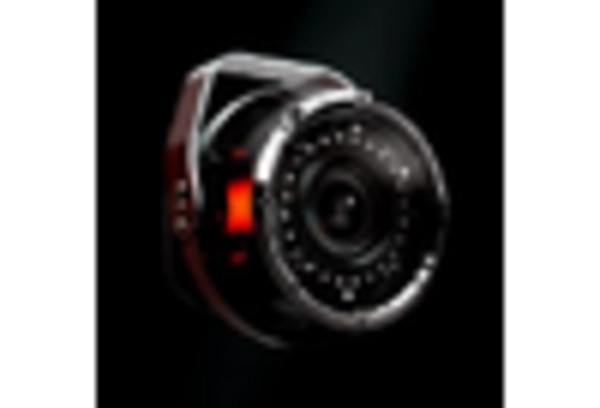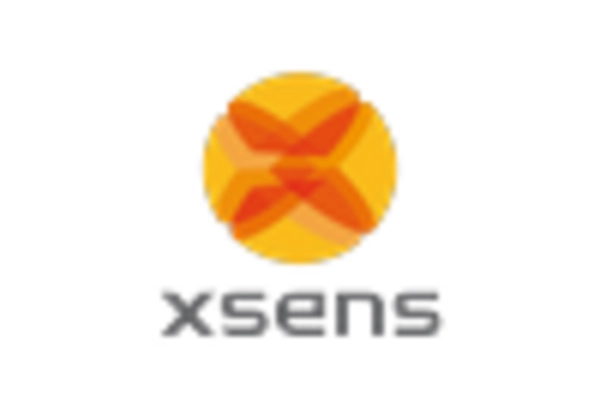The 3D motion-capture-system market is characterized by a dynamic competitive landscape, driven by technological advancements and increasing demand across various sectors, including entertainment, healthcare, and sports. Key players such as Vicon (GB), OptiTrack (US), and Motion Analysis Corporation (US) are at the forefront, each adopting distinct strategies to enhance their market positioning. Vicon (GB) focuses on innovation, particularly in developing high-fidelity motion capture solutions, while OptiTrack (US) emphasizes partnerships with software developers to integrate their systems into broader applications. Motion Analysis Corporation (US) appears to be concentrating on regional expansion, targeting emerging markets to diversify its customer base. Collectively, these strategies contribute to a moderately fragmented market structure, where competition is intensifying as companies seek to differentiate themselves through technological prowess and customer-centric solutions.
In terms of business tactics, companies are increasingly localizing manufacturing and optimizing supply chains to enhance efficiency and reduce costs. The competitive structure of the market remains moderately fragmented, with several players vying for market share. This fragmentation allows for niche players to thrive, while larger companies leverage their resources to innovate and capture a larger segment of the market. The collective influence of these key players shapes the competitive dynamics, as they continuously adapt to changing consumer demands and technological advancements.
In October 2025, Vicon (GB) announced the launch of its latest motion capture system, which integrates advanced AI algorithms to enhance data accuracy and processing speed. This strategic move is likely to solidify Vicon's position as a leader in the market, as the incorporation of AI technology aligns with current trends towards automation and efficiency in data analysis. The emphasis on AI not only enhances the product offering but also addresses the growing demand for real-time data processing in various applications.
In September 2025, OptiTrack (US) entered into a strategic partnership with a leading gaming software company to develop immersive virtual reality experiences. This collaboration is indicative of OptiTrack's commitment to expanding its footprint in the gaming industry, which is increasingly reliant on sophisticated motion capture technologies. By aligning with a prominent player in the gaming sector, OptiTrack is likely to enhance its visibility and market penetration, thereby driving growth in a lucrative segment.
In August 2025, Motion Analysis Corporation (US) expanded its operations into the Asian market, establishing a new facility in Singapore. This strategic expansion is significant as it allows the company to tap into the rapidly growing demand for motion capture solutions in Asia, particularly in sectors such as film and animation. By localizing its operations, Motion Analysis Corporation can better serve its customers and respond to regional market needs, potentially increasing its competitive edge in the global landscape.
As of November 2025, the competitive trends in the 3D motion-capture-system market are increasingly defined by digitalization, sustainability, and the integration of AI technologies. Strategic alliances are becoming more prevalent, as companies recognize the value of collaboration in enhancing their technological capabilities and market reach. Looking ahead, competitive differentiation is expected to evolve, with a notable shift from price-based competition to a focus on innovation, technological advancement, and supply chain reliability. This transition underscores the importance of adaptability and forward-thinking strategies in maintaining a competitive edge in a rapidly changing market.















Leave a Comment